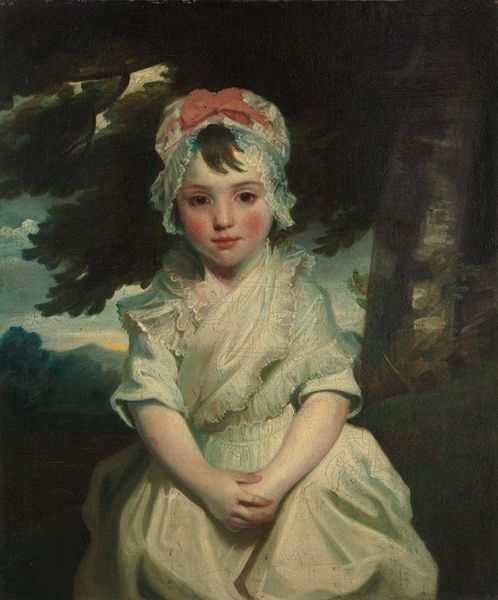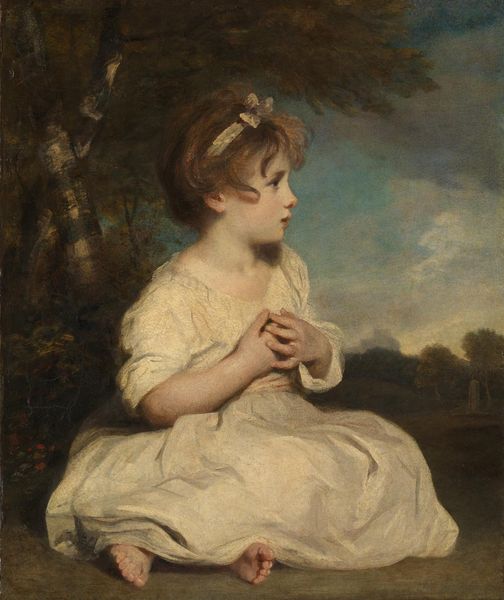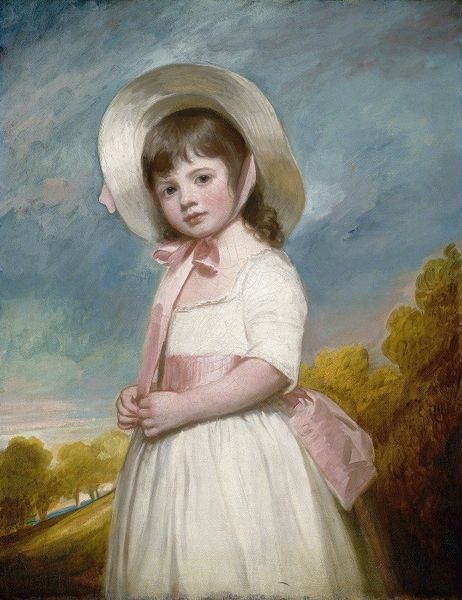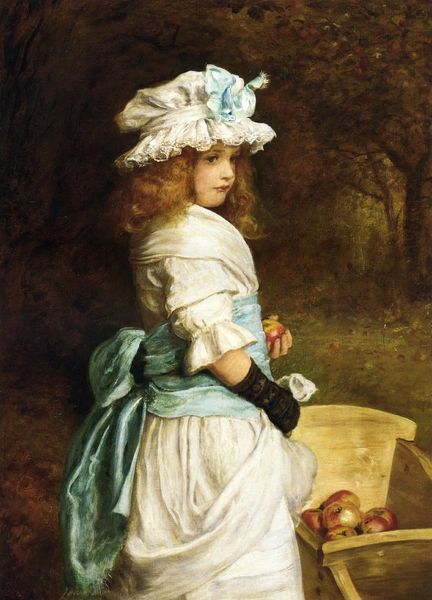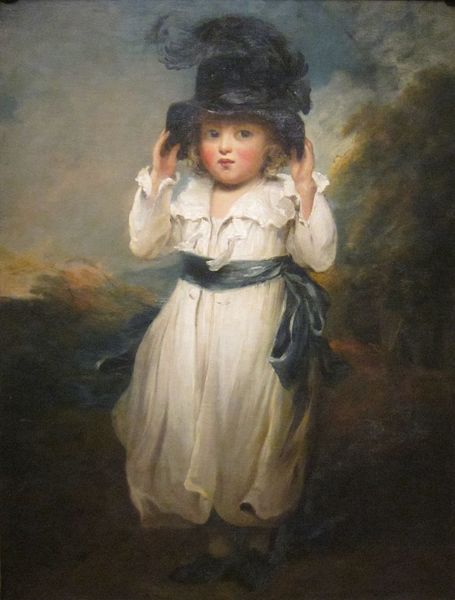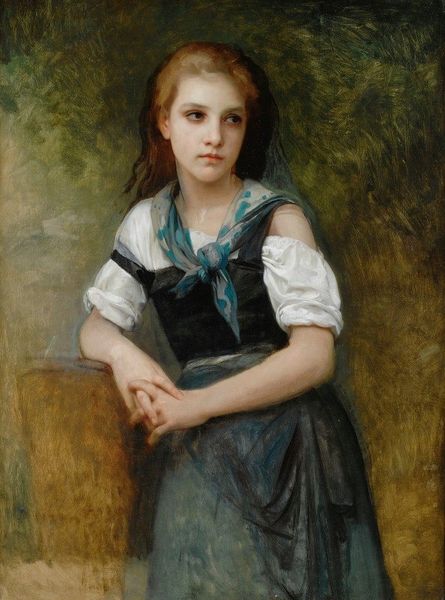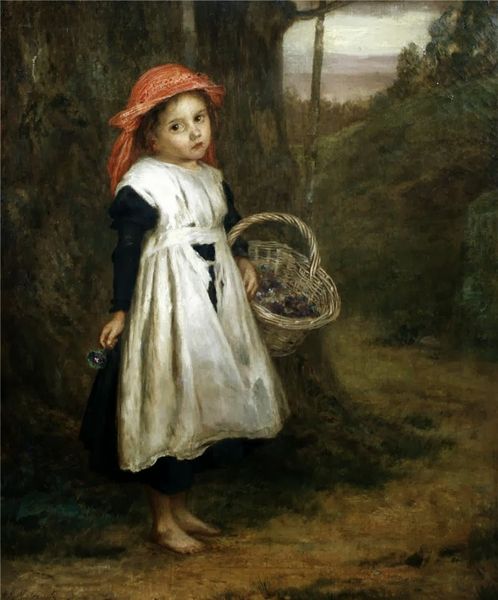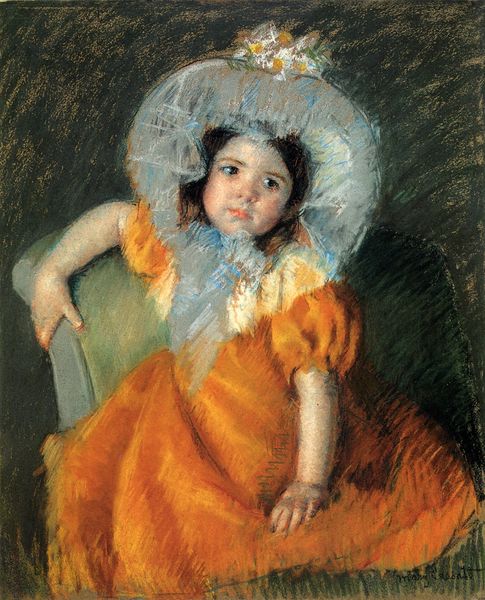
Copyright: Public Domain: Artvee
Jacques-Émile Blanche painted "Pouponne Zelinska au panier," during a time when portraiture was not just about capturing a likeness, but also about conveying social status and cultural ideals. Here, we see a young girl presented in a manner that speaks to the conventions of childhood within affluent circles of the late 19th and early 20th centuries. The delicate rendering of her features, combined with the elaborate clothing and bonnet, situate her within a narrative of innocence and privilege. But look closer, and you might question the emotional undercurrent of this image. Is there a sense of constraint or expectation in her gaze? What does it mean to depict a child in this way, almost as a miniature adult, bound by the fashions and expectations of her class? Blanche, as a member of the Parisian elite, was intimately familiar with these social codes, and his portraits often serve as documents of the cultural values of his time. Consider how the presentation of gender and class intersect in this artwork, reflecting both the realities and the aspirations of the Belle Époque.
Comments
No comments
Be the first to comment and join the conversation on the ultimate creative platform.
